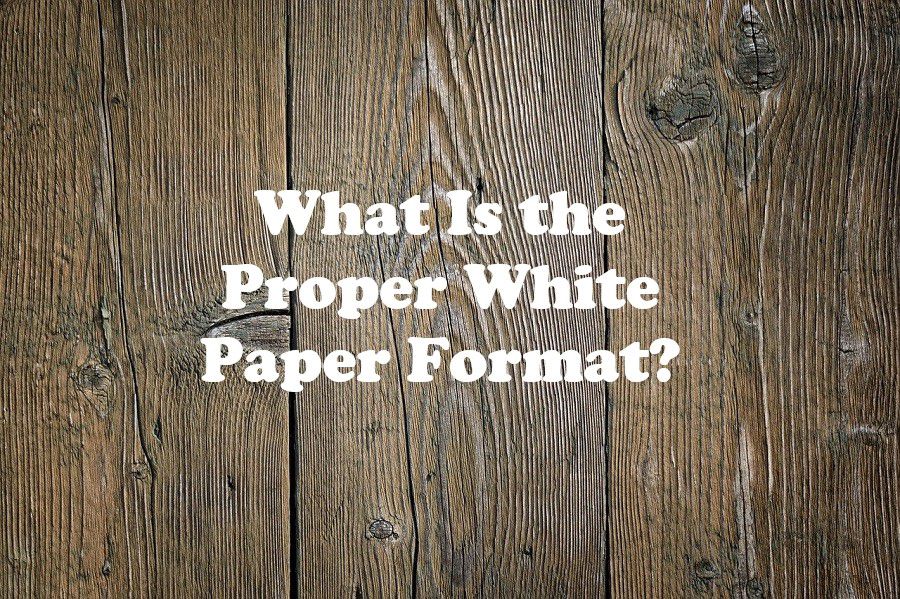Do white paper writing companies use a specific format? In other words, is there a white paper format that is standard across the board. This is a question I hear all the time. Clients ask because white papers are not something most of us are familiar with. A well-written white paper is a very valuable tool for establishing an organisation’s authority.
To answer the original question, there is no specific white paper format that is standard. Having said that, there are some standard guidelines broken down into two categories: what not to do and what writers should do, which should give you a general idea about white paper format standards, or indeed, the lack thereof. The point of this post is to help you understand a little bit more about white paper writing.
White Paper Format – 5 Things You Should Not Do
It has been said that white papers occupy that strange and ethereal place between marketing content and scholarly writing. It can be hard to find that place if you are new to white paper writing. I have developed a road-map, beginning with five things that writers should never do.
1. Make Lines and Paragraphs Too Long
Sentences and paragraphs that are too long will turn readers off. Pay attention to the length of both. A good rule of thumb is to look at visual appeal. If text is visually uncomfortable, try breaking it up with smaller paragraphs, bulleted lists, or subheadings.
2. Ignore Page Breaks
It is never a good idea to begin a new section of your white paper at the bottom of the page. Rather than letting text flow freely from one page to the next, make use of forced page breaks that send new sections to the next page.
3. Building a Grey Wall
A single page packed with text is known in the industry as a grey wall. Don’t build one. Use things like bullets, small graphics, and other visual breaks to make your pages less imposing.
4. Making Pages Too Busy
The opposite of the grey wall is the page too busy with multiple images, graphs, charts, etc. Do not create busy pages. Look to find that sweet spot of text and graphic content.
5. Abusing Hyphens and Quotation Marks
Auto spell features have a bad habit of abusing hyphens. Humans have a bad habit of abusing quotation marks. Avoid both as much as possible.
White Paper Format – 5 Things You Should Do
Just like there are things you should not do when writing a white paper, there are other things you should do. This section is a bit more limited because the guidelines are not as strict. Nonetheless, employ these five things as best you can.
1. Use a Linear Approach
Use a logical and linear approach in your writing. Introduce your topic, state your case, and reach a conclusion.
2. Choose a Descriptive Title
The title of a white paper has very little SEO value. Therefore, it should accurately describe what your white paper is about.
3. Be Concise
The worst thing white paper writers can do is exercise verbosity. Avoid this. Be as concise as possible while still getting your message across.
4. Write to Your Audience
White papers are intended to convince readers of an organisation’s authority. Write to them rather than for yourself. Write in their language, using words and phrases they understand.
5. Demonstrate Your Knowledge
Lastly, a white paper is a tool with which you can demonstrate your knowledge on a particular topic. Take advantage of that. Cite real-life examples, statistics, and anything else that demonstrates authority. The more knowledgeable you make your organisation appear, the more authority your white paper will generate.
White paper writing companies like mine at Connotations do not necessarily follow a single white paper format. But we do know what works and what doesn’t. However, I strongly recommend that you utilise a professional writing service if you don’t have experience with white papers. If you do want to write on your own, try to remember what you learned from this post – it should help make the process easier.
